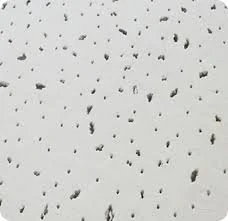Sep . 19, 2024 21:23 Back to list
main tee ceiling grid
Understanding Main Tee Ceiling Grid Systems
In the world of interior construction and design, the ceiling plays a crucial role not just in aesthetics but also in functional applications. One of the primary components of modern dropped ceilings is the main tee ceiling grid system. This system serves as the backbone for suspended ceilings, providing support for ceiling tiles, panels, and various other architectural elements. This article delves into the purpose, design, and benefits of the main tee ceiling grid.
What is a Main Tee Ceiling Grid?
A main tee ceiling grid is a framework made of metal (typically galvanized steel or aluminum) that is used to create a suspended ceiling system. It consists of long, horizontal support sections called main tees spaced at regular intervals, generally 4 feet apart. These main tees run perpendicular to the shorter cross tees, creating a grid that holds the ceiling tiles in place.
The main tee grid system allows for the easy installation of lighting fixtures, ventilation systems, and other mechanical components, all while providing a clean and finished aesthetic to the room.
Design and Installation
The design of a main tee ceiling grid system is not just about functionality; it also needs to comply with building codes and weight limitations. Before installation, professionals must assess the specific requirements of the space, including the height of the ceiling, the type of tiles to be used, and the presence of any electrical or plumbing systems running above the ceiling.
Installation typically involves securing the main tees to the structural ceiling using brackets or hangers. The cross tees are then inserted into the main tees, creating a grid structure. This pre-fabricated nature simplifies installation, making it relatively quick and efficient.
main tee ceiling grid

Benefits of Main Tee Ceiling Grids
1. Versatility The main tee ceiling grid can accommodate a variety of ceiling tile sizes and materials, allowing for creative freedom in design. Whether it’s traditional tile or modern acoustic panels, the grid supports diverse aesthetic options.
2. Accessibility One of the most significant advantages of a suspended ceiling system is easy access to utilities installed above it. If maintenance is required for plumbing, electrical systems, or HVAC, the tiles can be removed without extensive disruption.
3. Acoustic Control Many ceiling tiles used with main tee grids are designed to reduce noise. This is especially beneficial in commercial settings like offices, schools, or healthcare facilities where sound management is crucial.
4. Aesthetic Appeal A main tee ceiling grid can provide a clean and uniform look to a space, enhancing the overall decor. The ability to create varied patterns and levels within the ceiling adds visual interest, elevating the design.
5. Energy Efficiency By incorporating light-reflective ceiling tiles, a main tee ceiling grid can help in reducing energy costs. Enhanced lighting distribution can lead to a well-lit environment without heavy reliance on additional lighting fixtures.
Conclusion
In conclusion, the main tee ceiling grid system is an essential element in modern construction, offering a combination of functionality, versatility, and aesthetic appeal. Whether used in commercial buildings or residential spaces, this system provides invaluable support for suspended ceilings, making it a staple in the world of interior design and construction.
-
Quality Ceiling Trap Doors & Access Panels | Easy & Secure AccessNewsAug.30,2025
-
Durable Ceiling T Grid Systems | Easy InstallationNewsAug.29,2025
-
PVC Gypsum Ceiling: Durable, Laminated Tiles for Modern SpacesNewsAug.28,2025
-
Pvc Gypsum Ceiling Is DurableNewsAug.21,2025
-
Mineral Fiber Board Is DurableNewsAug.21,2025
-
Ceiling Tile Clip Reusable DesignNewsAug.21,2025







